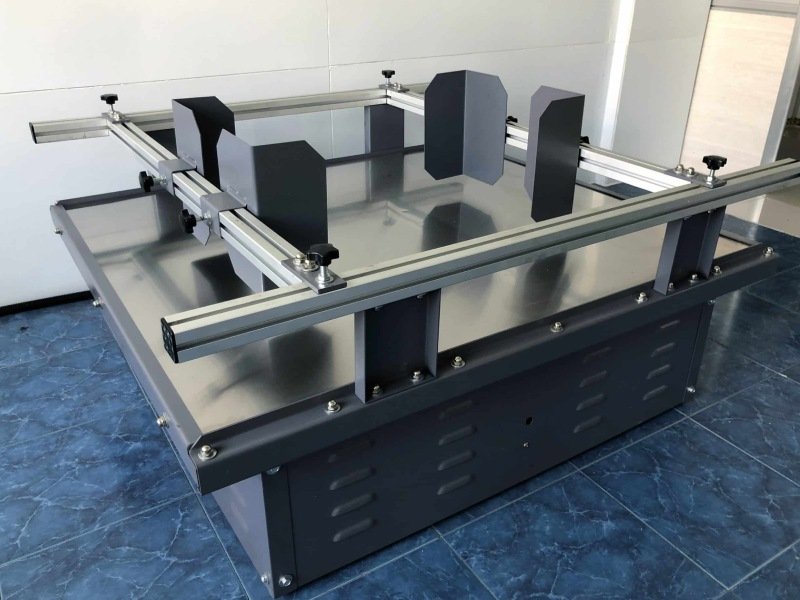In the world of hardware, hinges are ubiquitous, serving as the pivotal components that enable movement in doors, cabinets, and various mechanical assemblies. Among the myriad types of hinges, stepped surface hinges stand out as specialized solutions designed to address unique mounting challenges. These hinges are engineered to accommodate uneven or stepped surfaces, ensuring smooth operation and a secure fit in applications where standard hinges fall short. This article delves into the intricacies of stepped surface hinges, exploring their design, functionality, applications, and advantages in various industries.
Stepped surface hinges are distinct from conventional hinges due to their ability to bridge gaps or height differences between two surfaces. Unlike standard hinges that require flush, parallel mounting surfaces, stepped hinges feature an offset or stepped design that allows them to connect surfaces at different planes. This makes them ideal for applications involving panels, doors, or frames with varying thicknesses or elevations. Their versatility and adaptability have made them a go-to choice in industries ranging from furniture manufacturing to industrial equipment design.
What Are Stepped Surface Hinges?
A stepped surface hinge is a type of hinge specifically designed to mount on surfaces that are not coplanar, meaning they are at different heights or levels. The "stepped" aspect refers to the hinge's ability to compensate for this height differential, ensuring that the hinge can pivot smoothly without straining the connected components. These hinges are typically surface-mounted, meaning they are attached directly to the exterior of the surfaces without requiring a mortise (a recessed cutout) in the material.
The primary distinguishing feature of stepped surface hinges is their offset design. One or both leaves of the hinge are bent or shaped to create a step, allowing the hinge to align properly with surfaces of differing thicknesses or elevations. For example, in a cabinet with a door that is thicker than the frame, a stepped hinge can bridge the gap, ensuring the door swings freely without binding. This design eliminates the need for additional spacers or shims, simplifying installation and improving aesthetics.
Stepped surface hinges are commonly made from materials like stainless steel, brass, or aluminum, chosen for their durability and resistance to corrosion. They are available in various sizes and configurations to suit different panel thicknesses, typically ranging from 2 to 5 mm, though custom options exist for specialized applications. Some stepped hinges are also available in "clean processed" versions, which undergo additional finishing to remove burrs or contaminants, making them suitable for environments requiring high cleanliness, such as medical or food processing facilities.
Design and Construction
The design of a stepped surface hinge is both functional and precise, tailored to meet the demands of specific applications. A typical stepped hinge consists of two leaves connected by a pin or pivot point, much like a standard hinge. However, the leaves are engineered with a step or offset to accommodate the height difference between the mounting surfaces. This step can vary in size, depending on the application, and is often specified in millimeters (e.g., a 2 mm step for a panel that is 2 mm thicker than the frame).
Key Components
- Leaves: The flat portions of the hinge that attach to the surfaces. In a stepped hinge, one or both leaves may have a bent or offset section to create the step.
- Pivot Pin: The central pin that allows the leaves to rotate relative to each other, enabling the hinge's swinging motion.
- Mounting Holes: Pre-drilled holes in the leaves for screws or bolts, facilitating easy attachment to the surfaces.
- Step or Offset: The critical feature that differentiates stepped hinges, allowing them to bridge uneven surfaces.
Material Choices
The choice of material for stepped surface hinges depends on the application's requirements. Common materials include:
- Stainless Steel: Offers excellent strength and corrosion resistance, making it ideal for outdoor or harsh environments.
- Brass: Provides a decorative finish and is often used in furniture or architectural applications.
- Aluminum: Lightweight and corrosion-resistant, suitable for applications where weight is a concern.
- Carbon Steel: Used in heavy-duty applications where high strength is needed, often with a protective coating to prevent rust.
Manufacturing Process
Stepped surface hinges are typically manufactured using precision stamping or forming processes to create the offset in the leaves. The metal is cut, bent, and shaped to exact specifications, ensuring consistency and accuracy. Additional finishing processes, such as polishing, plating, or powder coating, may be applied to enhance durability or aesthetics. For clean-processed hinges, extra steps like deburring or ultrasonic cleaning are employed to meet stringent hygiene standards.
Types of Stepped Surface Hinges
Stepped surface hinges come in various configurations to suit different applications. Some common types include:
- Single-Step Hinges: These hinges have a step on one leaf, designed for applications where only one surface is elevated. They are commonly used in cabinetry or panel mounting.
- Double-Step Hinges: Both leaves feature a step, allowing the hinge to connect two surfaces with different elevations relative to the pivot point. These are used in more complex assemblies, such as industrial enclosures.
- Adjustable Step Hinges: Some stepped hinges offer adjustable offsets, allowing installers to fine-tune the step size during installation. These are ideal for applications with variable surface heights.
- Heavy-Duty Stepped Hinges: Designed for high-load applications, these hinges are made from thicker materials and can support heavier doors or panels, such as those found in industrial machinery.
- Decorative Stepped Hinges: These combine functionality with aesthetics, featuring ornate designs or finishes for use in furniture or architectural settings.
Applications of Stepped Surface Hinges
Stepped surface hinges are used across a wide range of industries due to their ability to solve unique mounting challenges. Below are some key applications:
1. Cabinetry and Furniture
In cabinetry, stepped surface hinges are used to mount doors on frames with different thicknesses. For example, a cabinet door that is 5 mm thicker than the frame can be securely attached using a stepped hinge, ensuring smooth operation and a clean appearance. These hinges are also popular in furniture design, where they allow designers to create pieces with non-standard dimensions or unconventional materials.
2. Industrial Enclosures
Industrial enclosures, such as those used for electrical panels or machinery, often feature panels of varying thicknesses. Stepped surface hinges provide a reliable solution for mounting these panels, ensuring they open and close smoothly without compromising the enclosure's integrity. Stainless steel stepped hinges are particularly popular in this context due to their durability and resistance to environmental factors.
3. Automotive and Aerospace
In the automotive and aerospace industries, stepped hinges are used in applications where lightweight materials and precise engineering are critical. For example, they may be used to mount access panels or hatches on vehicles or aircraft, where the panel and frame are at different elevations. Aluminum stepped hinges are often chosen for their lightweight properties.
4. Medical and Cleanroom Environments
Clean-processed stepped hinges are essential in medical and cleanroom environments, where hygiene is paramount. These hinges are used to mount doors or panels in equipment such as sterilization units, laboratory cabinets, or pharmaceutical storage systems. The absence of burrs or contaminants ensures compliance with strict cleanliness standards.
5. Architectural and Building Hardware
In architectural applications, stepped surface hinges are used in doors, windows, or gates where the frame and panel are not flush. Decorative stepped hinges made from brass or polished stainless steel can add a touch of elegance to high-end residential or commercial projects.
6. Consumer Electronics
Stepped hinges are also found in consumer electronics, such as laptops or foldable devices, where they enable smooth pivoting between components with different thicknesses. Their compact design and precise engineering make them ideal for these applications.
Advantages of Stepped Surface Hinges
Stepped surface hinges offer several advantages over standard hinges, making them a preferred choice in specific scenarios:
- Versatility: Their ability to accommodate uneven surfaces makes them suitable for a wide range of applications, from cabinetry to industrial equipment.
- Ease of Installation: As surface-mounted hinges, they do not require mortising, simplifying the installation process and reducing labor costs.
- Durability: Made from robust materials like stainless steel or brass, stepped hinges are built to withstand wear and tear, even in demanding environments.
- Aesthetic Appeal: Decorative stepped hinges can enhance the visual appeal of furniture or architectural elements, combining functionality with style.
- Cost-Effectiveness: By eliminating the need for additional spacers or custom machining, stepped hinges can reduce overall project costs.
- Customization: Many manufacturers offer custom stepped hinges with specific step sizes, materials, or finishes to meet unique project requirements.
Challenges and Considerations
While stepped surface hinges are highly effective, there are some challenges and considerations to keep in mind:
- Load Capacity: Stepped hinges may have lower load capacities than heavy-duty standard hinges, so it’s essential to select the right hinge for the weight of the door or panel.
- Alignment: Proper alignment is critical to ensure smooth operation. Misaligned hinges can cause binding or uneven wear.
- Material Compatibility: The hinge material must be compatible with the mounting surfaces to prevent corrosion or galvanic reactions, especially in outdoor or humid environments.
- Aesthetic Limitations: In some applications, the visible step may detract from the overall design, requiring careful selection of decorative or concealed options.
- Cost: Specialized stepped hinges, especially clean-processed or custom versions, can be more expensive than standard hinges.
Installation Guidelines
Installing stepped surface hinges requires careful planning to ensure optimal performance. Here are some general guidelines:
- Measure the Step: Confirm the height difference between the two surfaces to select a hinge with the appropriate step size.
- Choose the Right Material: Select a hinge material that matches the application’s environmental conditions (e.g., stainless steel for outdoor use).
- Align the Hinge: Use a level or template to ensure the hinge is properly aligned before drilling mounting holes.
- Secure the Hinge: Use appropriate screws or bolts to secure the hinge to the surfaces, ensuring they are tight but not over-torqued.
- Test the Operation: After installation, test the hinge to ensure smooth pivoting and no binding. Adjust alignment if necessary.
Comparison with Other Hinge Types
To better understand the role of stepped surface hinges, it’s helpful to compare them with other common hinge types:
- Butt Hinges: These are standard hinges with rectangular leaves, typically mortised into the door and frame. Unlike stepped hinges, they require flush surfaces and are not suitable for uneven mounting.
- Offset Hinges: Similar to stepped hinges, offset hinges move the pivot point away from the mounting surface. However, they are primarily used to provide clearance for doors that swing past obstructions, rather than to accommodate height differences.
- Surface-Mounted Hinges: Like stepped hinges, these are attached to the surface without mortising. However, standard surface-mounted hinges lack the stepped design and cannot handle uneven surfaces.
- Pivot Hinges: Used for pivot doors, these hinges are mortised into the door and frame, offering a different motion mechanism than stepped hinges.
Future Trends in Stepped Surface Hinges
As technology and design trends evolve, stepped surface hinges are likely to see advancements in several areas:
- Smart Hinges: Integration of sensors or IoT technology could enable stepped hinges to monitor door usage, detect wear, or provide security alerts in smart buildings.
- Lightweight Materials: Advances in composite materials or high-strength alloys could lead to lighter, stronger stepped hinges for aerospace or automotive applications.
- Sustainability: Manufacturers may focus on eco-friendly materials and processes, such as recyclable metals or low-energy production methods.
- Customization: Increased demand for bespoke furniture and architecture may drive the development of highly customizable stepped hinges with unique finishes or adjustable steps.
- Automation: In industrial settings, stepped hinges could be designed for use with automated doors or panels, incorporating features like self-closing mechanisms or motor-driven pivots.
Conclusion
Stepped surface hinges are a vital component in applications where uneven surfaces pose a challenge to standard hinge designs. Their ability to bridge height differences, combined with their durability and ease of installation, makes them indispensable in industries ranging from cabinetry to aerospace. By understanding their design, applications, and advantages, designers and engineers can leverage stepped hinges to create innovative, functional, and aesthetically pleasing solutions.
As industries continue to push the boundaries of design and functionality, stepped surface hinges will remain a key player in the hardware landscape. Whether in a sleek modern cabinet, a rugged industrial enclosure, or a cutting-edge consumer device, these hinges demonstrate the power of specialized engineering to solve real-world problems. With ongoing advancements in materials, manufacturing, and technology, the future of stepped surface hinges looks promising, offering even greater versatility and performance for years to come.







